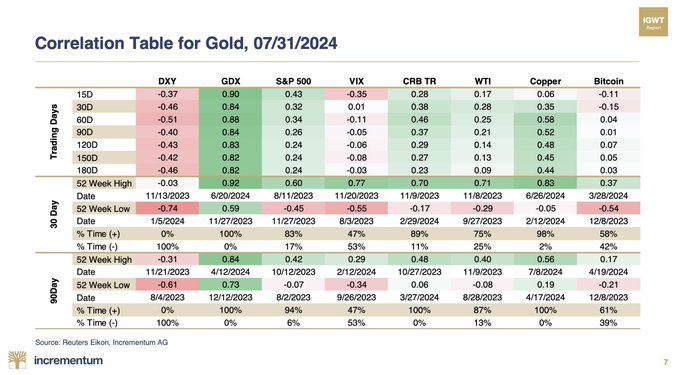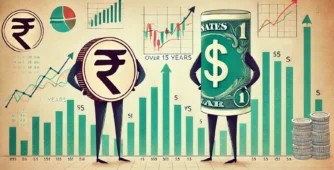Understanding Gold’s Correlation with Other Assets
Gold is a unique asset with distinct correlations to other financial instruments, such as the dollar index, equities, commodities, and even newer investments like Bitcoin. To better understand how gold behaves compared to these assets, it’s helpful to look at some insights from a recent analysis of gold’s correlation with various markets. This can give investors a clearer picture of how gold may perform in different economic conditions.

Gold and Bitcoin – No Correlation
One interesting finding is the lack of correlation between gold and Bitcoin. While both assets are often discussed in the same context by investors looking for alternatives to traditional markets, their movements have little to do with one another. Whether Bitcoin is rising or falling, gold’s price doesn’t seem to be impacted. This can be reassuring for investors who hold both assets, knowing that they act independently.
Gold and the Stock Market
Gold’s correlation with the stock market, specifically the S&P 500, tells a different story. While some might expect an inverse relationship, where gold rises when stocks fall, the correlation between gold and the U.S. market is actually positive. This means that when the stock market is doing well, gold often performs well, too. The key driver here is liquidity – when there is more money flowing into markets, it affects both stocks and gold in a positive way.
Gold and Other Commodities
When comparing gold to other commodities like oil and copper, the correlation is mixed. While there is some positive correlation between gold and these assets, it’s not very strong. This indicates that while they may move together occasionally, they often follow their own paths based on different market forces. This makes gold a somewhat independent asset, not tightly linked to broader commodity trends, providing some diversification within a commodity-heavy portfolio.
Gold and the U.S. Dollar
One of the strongest relationships gold has is with the U.S. dollar index. There is a clear negative correlation between the two – when the dollar strengthens, gold prices tend to drop, and when the dollar weakens, gold usually rises. This makes sense, as gold is priced in dollars. A stronger dollar means gold becomes more expensive for foreign buyers, reducing demand and driving down prices.
Gold in Indian Markets – A Safe Haven
For investors in India, gold provides a strong inverse correlation with the stock market. When markets like the Nifty 50 or broader Indian indices are struggling, gold prices in INR terms often rise. This is particularly important for Indian investors who want to protect their portfolios during periods of stock market decline. In times of market uncertainty, gold becomes a reliable hedge, offering stability and protection against losses in equities.
Mi EverGreen’s Subscription Fee goes up on 10 Sep 2024
Effective 10 Sept 2024 , Mi EverGreen’s subscription fee will be increased for the first time since launch.
Old Pricing : Rs 2,499 (Quarterly) | Rs 7,499 (Annual)
New Pricing : Rs 4,999 (Quarterly) | Rs 14,999 (Annual)
For Current Subscribers of Mi Evergreen
Nothing changes for current subscribers at all. You shall continue to enjoy access to the strategy at your current subscription fee as long as you do not break your subscription loop. Kindly ensure that you keep your auto renew ON and renew your subscription on time.
For those who haven’t subscribed yet
This is a great opportunity to subscribe to Mi Evergreen at its current pricing. Use the link given below to subscribe
Disclaimers and disclosures : https://tinyurl.com/2763eyaz
If you have any questions, please write to support@weekendinvesting.com













